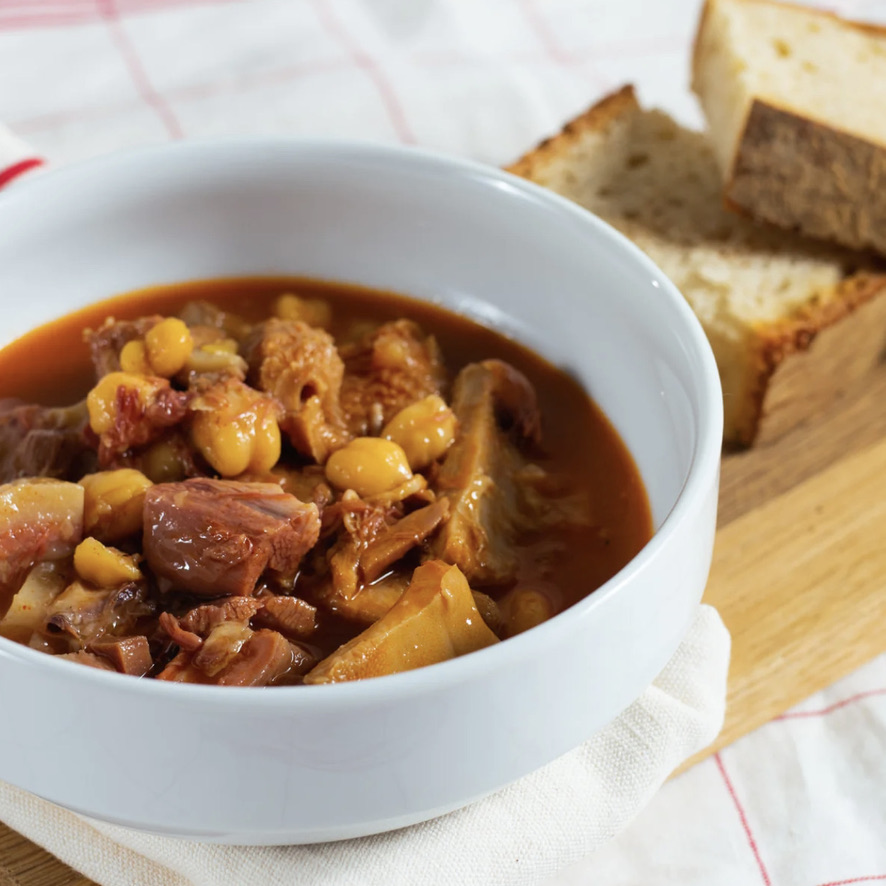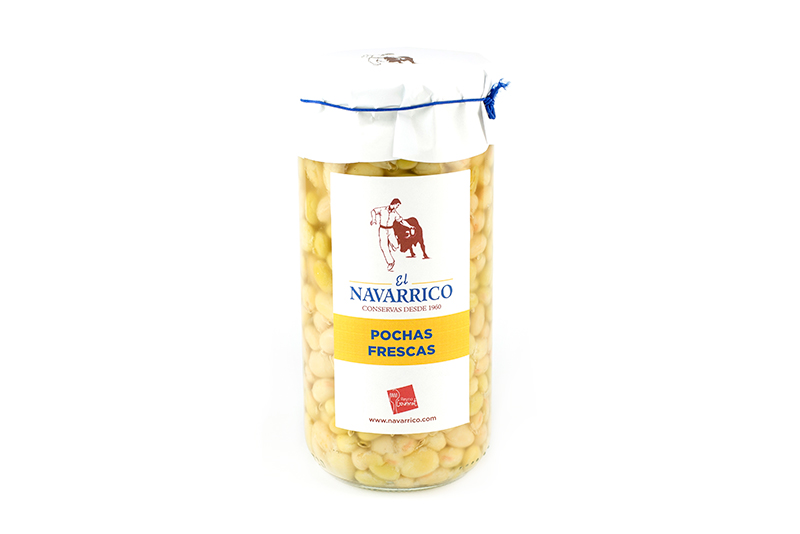by Graham Keeley - @grahamkeeley
.png.transform/rendition-xs/image_image%20(1).png)

by Graham Keeley - @grahamkeeley
Some companies are selling prepared classic dishes as fabada or callos while others hand customers pochas and chickpeas for cooking their own dishes
As the weather finally cools after a baking summer and the winter seems just round the corner, Spaniards invariably leave the summer staples of gazpacho and turn to fabadas, callos and cocidos. These typical stews are staples across the country, but each region has their version of these dishes which are as Spanish as paella.
Let’s take callos, for instance. Or callos a la madrileña as it is said to originate from the Spanish capital. These are made with beef intestine to which chorizo is added along with bacon and sometimes morcilla or black pudding. However, pork is not the main ingredient. The vegetables which accompany the meat are just like those used for soup - carrots, onions, beans. There is also a marine version, callos de bacalao, which includes Cod tripe among other ingredients.
When cooking callos, the broth is rich in gelatine and the tripe should be very tender. This is a complex and difficult recipe that, luckily, some Spanish companies prepare so foodies all around the world have only to open the can and eat. Given this is a ‘winter-warmer’, Spain’s leading makers of callos a la madrileña and fabada are targeting diners in colder countries like Britain, Germany and France as well as the United States.
Petramora, one of the leaders in this field, is a gourmet shop which sells high quality products of its own and other brands. Some of the products which it sells are: tripe, veal head, sweet and spicy chorizo, sweet and spicy pimentón, tomato, caramelized onion, garlic, chickpeas, jamón ibérico, saffron, brandy, thyme, bay leaf, chillies, virgin olive oil, chicken broth and salt.
Petramora is searching for consumers abroad. Mikel Zeberio, one of the creators and selectors of food for Petramora, explained that fabada and cocido madrileño, another stew, were very different dishes. Fabada is traditionally made in Asturias, a region in northern Spain. There are different traditional stews made with beans around the country. In the Basque Country, an area in northwestern Spain, there is one made using black beans from Tolosa, a town from this province. However, this is a dish which is different from fabada. It is also usually accompanied with chorizo, morcilla and pork jowl but the recipe also includes another classic product from Tolosa, the thin pickled green pepper piparra which makes a great pairing!

“We export small quantities (of our products and those of other brands) at the moment. Our plan is to export these quality products which is so appreciated (in Spain). We have many dishes which are ready-made. What we want to do is sell, of course,” Mr Zeberio said. He said Petramora was a gourmet shop which sold its own products and those of other brands. “Britain will be a great market, but also France and Germany.” Petramora also sells callos, using the recipe of Jordi Vilà, a Michelin star chef who runs the Alkimia restaurant in Barcelona. “We want people to have as much respect for cocidos as for paella,” he said.
The popularity of pochas in the UK
Conservas El Navarrico is a family-run company which since 1960 has produced high quality vegetable conserves, some of which are used to make cocidos, fabadas or callos. Patxi Pastor Salcedo is the commercial director and the third generation of the family which runs Conservas El Navarrico. He said pochas frescas – or fresh beans – are popular in Britain – the company’s top export market.
“Fresh beans are different from white beans. They come from the same plant. Fresh beans have water inside them while the white beans have to be dehydrated and as such, they lose their colour,” Mr Pastor Salcedo said.
Fresh beans are typical in Aragón, Navarre and La Rioja, three regions in northern Spain “You often consume fresh beans in winter like many other vegetables. The harvest is June and July but as we want to sell them all year round, we conserve them with water and salt,” Mr Pastor Salcedo said.

He said Navarrico worked to produce high quality products as opposed to mass production. “What we look for is high quality, not producing cheaper food. We sell to gourmet and high-quality restaurants,” he added.
The company exports to 35 countries including Britain, the United States, Canada, Mexico, Italy, France, Sweden, Belgium, Japan, Hong Kong, China, Australia, New Zealand and the Philippines. In Britain, Navarrico has sold its products in Brindisa, a store in Borough Market in London for the past 40 years.
“In the past Britain was much more closed to other gastronomy but now British people have travelled more, and they are open to other types of food,” Mr Pastor Salcedo said. “There are many more types of food, including Spanish food. The chef José Pizarro is an ambassador for Spanish food.”
“In Britain as we have been selling there for so long, there is a niche in the high-quality market. We sell to restaurants and high-quality shops as well as Ocado, the online supermarket.” Chickpeas, beans, lentils, and pimientos de Padrón - peppers - are their best-selling products outside Spain, he said. In Britain, chickpeas are the most sought after.
“We just add water and salt, but the quality of the base material is what is important to us. There are companies which buy cheaper. Our ideology is to buy the best quality prime products.” The United States and Mexico are the markets where Navarrico wants to expand. “There are many more possibilities in those markets which have yet to be exploited and we would like to expand there - as we would elsewhere,” Mr Pastor Salcedo said.